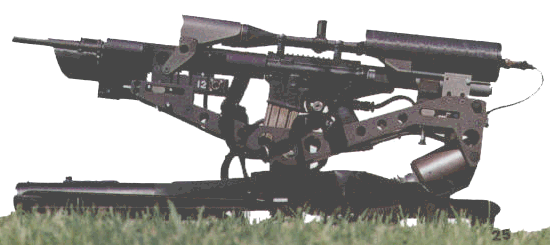
 |
The unusual system was originally built under U.S. Army specifications and is now available for military, Law Enforcement (LE) and government agencies. The system was already procured by the U.S. army and several foreign armies. It was also tested by several American SWAT teams including the LAPD and the SFPD teams.
The main idea behind the system is to keep the sniper and his spotter out of the line of suppressive fire, while maintaining superior accuracy on one target or multiple targets. Once the TRAP is placed in the line of fire, the only instant of exposure, the operator can retreat to a safe location, and can remotely view the image feeds from the rifle scope and the overview spotter camera, and if necessary, remotely fire the system.
TRAP also minimize operator' errors in firing a weapon. The system maintains soldier performance under stress, allows operators to seek optimal cover, provides superior command oversight and around the clock operation without the needs for shifts changes.
Once in the field and set for operation, the TRAP system is activated by the operator via the TRAP control unit. By shifting the aim, the operator can scan the ground either through a surveillance camera installed right on the remote platform or with X9 camera fitted on the weapon scope.
The system can be concealed in places considered too small or risky for humans and provide continuous electronic intelligence gathering, resistance to adverse environmental factors (such as fatigue, cold, precipitation, heat) as well as personal ones such stress and fear which effect and degrade shooters' abilities and response times, taking toll in deaths and injuries.
The system is especially suited for civilian tactical teams. Since the sniper and his spotter are out of the line of fire, the operators' need to use deadly force is much reduced, and the ability to resolve situations with effective negotiation is enhanced. So the system can help save not only officers' lives but also that of suspects or hostages.
The system is easy to transport and quick to deploy so they it's ideal for rapid deployment forces. Since it's much smaller then a man and lack his typical shape, the system can be easily camouflaged and concealed, while possessing a very small target for opposing fire.
Another advantage is the tactical ability to deploy in long-term extreme environments operations, such as desert and cold weather, or operations in which there is a threat of Nuclear, Biological or Chemical (NBC) contamination. TRAP technology would allow friendly forces to remain safe and would enhance the readiness of personnel and minimize the reduction in performance that comes naturally with operations in such environments.
On the other hand, the system main limitation is in fluid situations, when a sniper would simply change its position. However, in the case of the immobile TRAP this would be at a distinct disadvantage. So the system would be better used in barricaded situations.

PRI currently offers four TRAP products:


 |
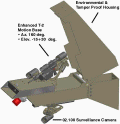
 TRAP Components
TRAP Components
The operator controls the direction of the remote platform using a joystick on a small hand controller, and can see the view through the gun scope and / overview camera on a video monitor or via the viewfinder (which is mounted on the hand controller).
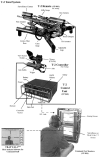 |
 TRAP carbon fiber remote turret platform. The platform has with two video cams - the first gives a wide-screen view of the scene and is located on the right side of the platform, and the second one provide X9 view through the weapon's scope.
TRAP carbon fiber remote turret platform. The platform has with two video cams - the first gives a wide-screen view of the scene and is located on the right side of the platform, and the second one provide X9 view through the weapon's scope.
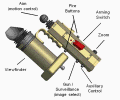 TRAP hand held controller, with viewer , screen switch (from spotter to scope video cam), aiming joystick and trigger. Used for man portable applications.
TRAP hand held controller, with viewer , screen switch (from spotter to scope video cam), aiming joystick and trigger. Used for man portable applications.
 Vehicle mounted TRAP interface control unit. This system is connected to a modified joystick and screen as seen in the photo below.
Vehicle mounted TRAP interface control unit. This system is connected to a modified joystick and screen as seen in the photo below.
 Controlling the system. The interface control unit is seen on top of the TV screen.
Controlling the system. The interface control unit is seen on top of the TV screen.
The TRAP can host a variety of semi auto assault rifles and SWS, and even the future OICW, but it was especially made for:



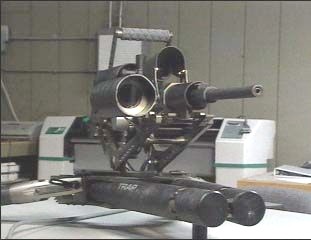
The two video cam of the TRAP system. The wide lens video cam is seen on the right side of the platform, while the X9 scope video cam is seen on top of the weapon.
 TO series of remote controlled sensors and optics.
TO series of remote controlled sensors and optics.


T250 with a Barrett M82A1.
The following photos show an Israeli TRAP T2 system fitted with a KAC SR25 SWS, and were taken during the siege on the Church of Nativity, Beit Lehem, April-May 2002. The T2 system was fitted on a crane in order to take out terrorists inside the church, as well as to gather real time intelligence.
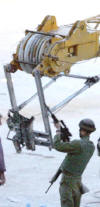
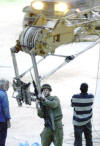
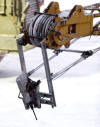
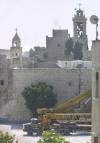





The photos above were taken with the Israeli TRAP system in the Church of Nativity, May 2002. The first two photos from left were taken with the TRAP X9 sniper scope video camera fitted on the weapon, note the crosshairs. The other three photos were taken with the TRAP wide lens video camera fitted on the right side of the TRAP platform.
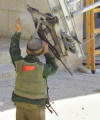
After the siege - an operator is seen removing the SR25 from the T2. Note that the weapon is fitted with its original 20 rounds magazine. This means that the weapon had be lowered after each 20 rounds and have its magazine replaced. The remote controlled trigger adapter is also seen fitted on the trigger.